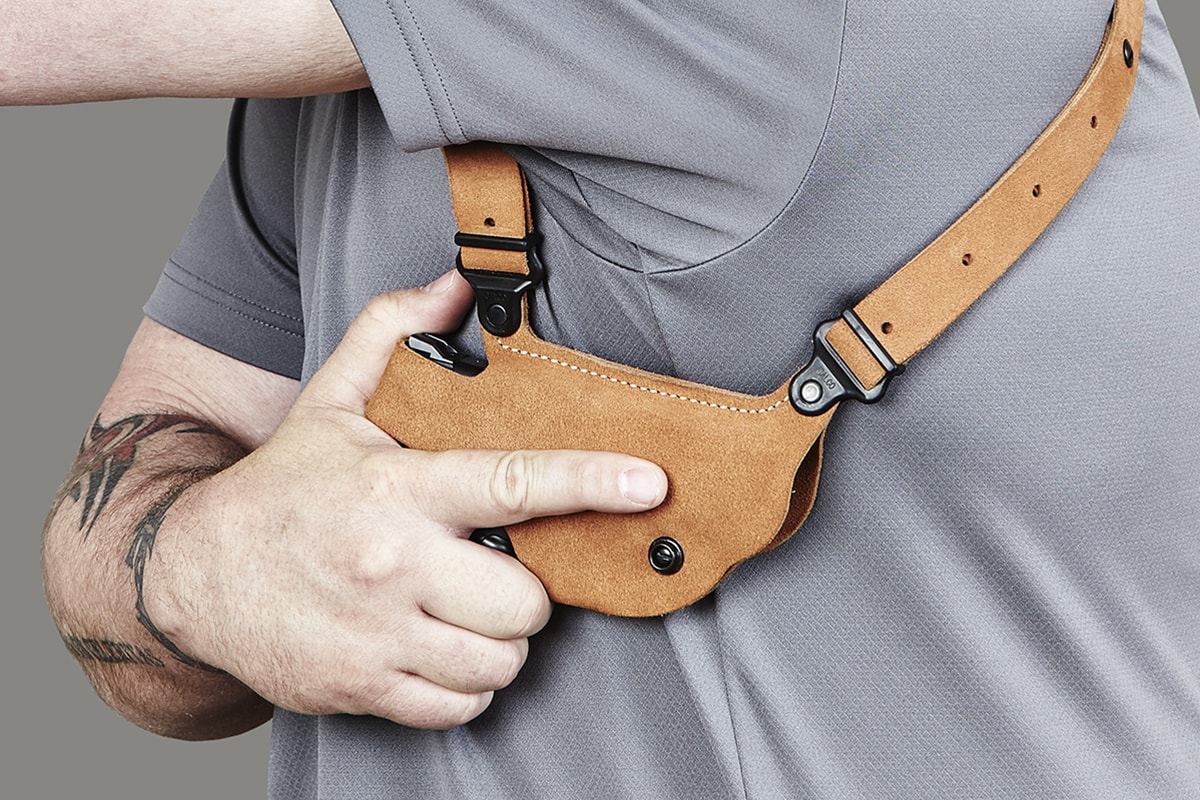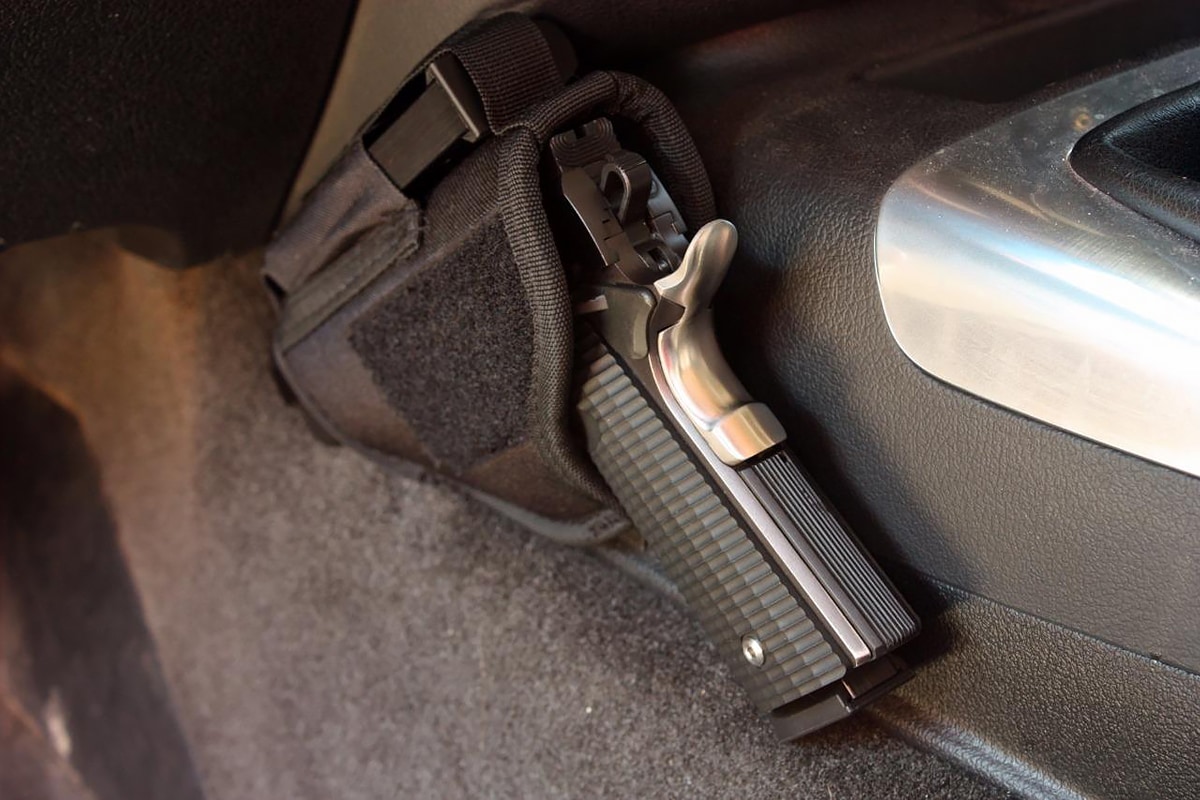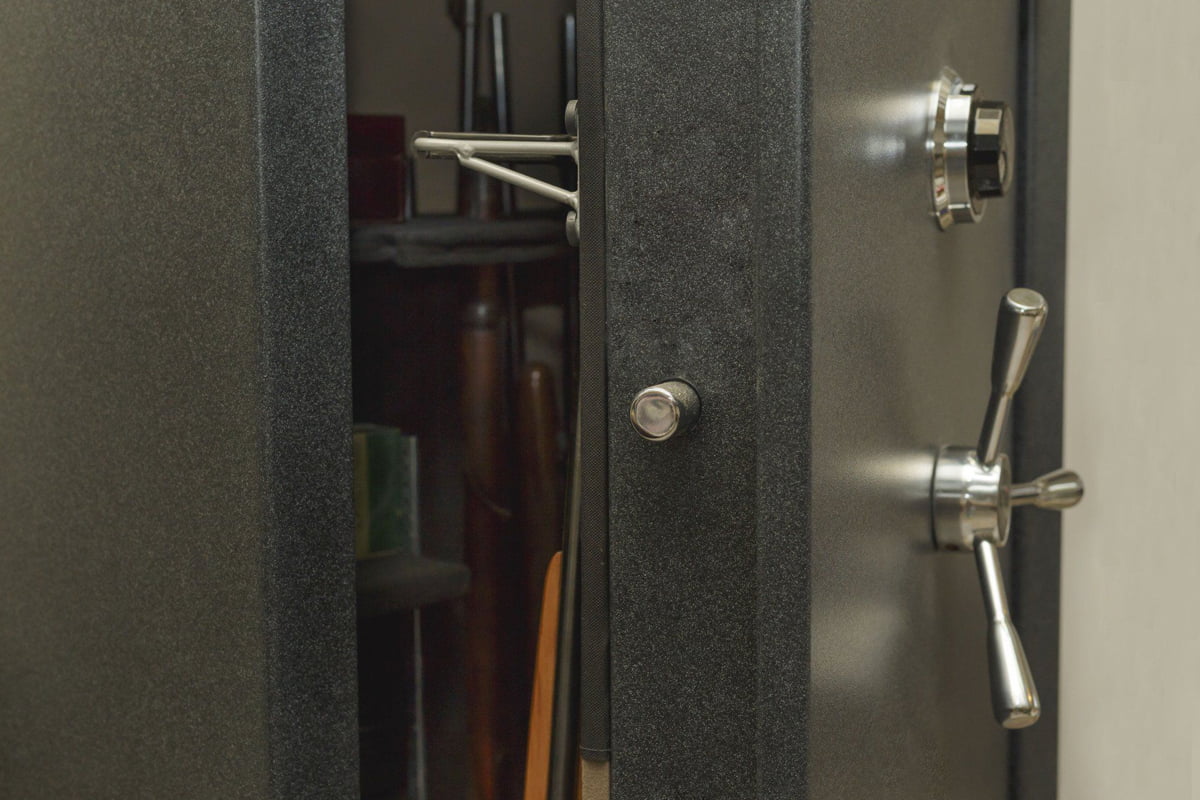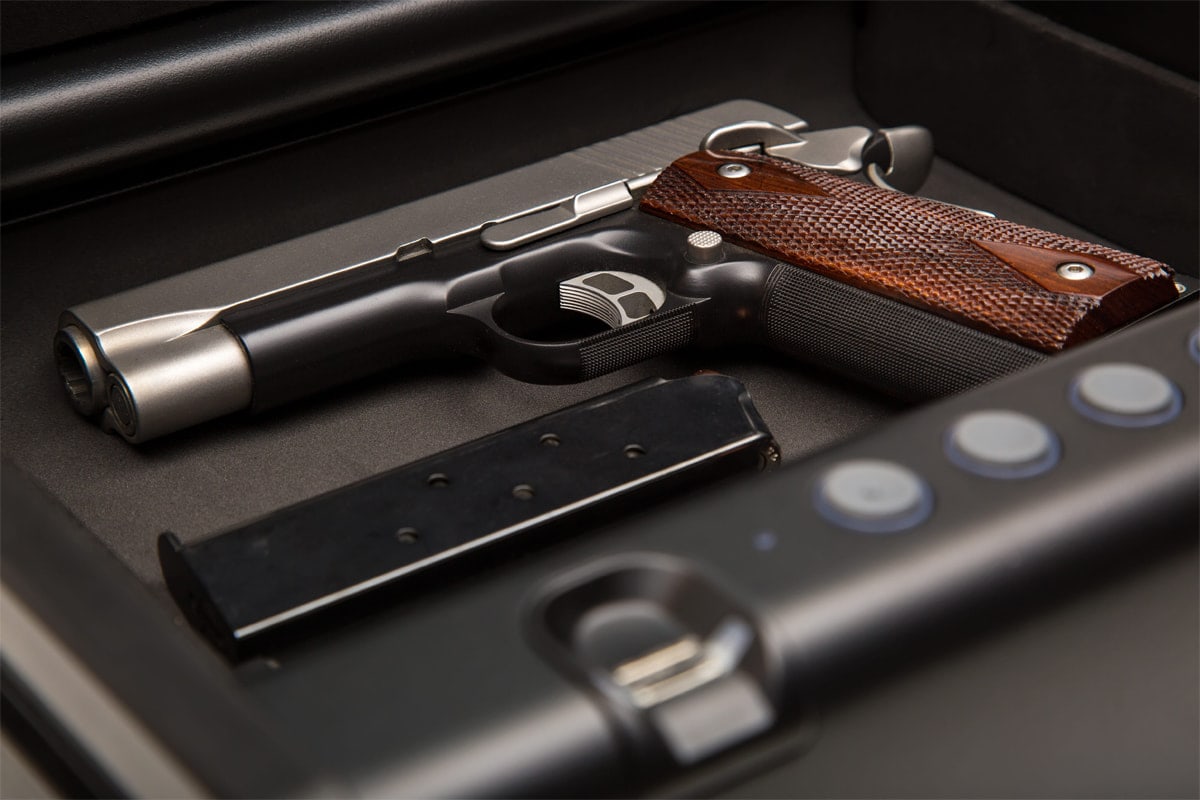Shoulder holsters are one of the most comfortable and concealable holsters for compact handguns that can give gun owners the utmost comfort and concealment.
When using a shoulder holster, please observe the following safety and wearing instructions at all times.
Read the Safety Notice First
When holstering your handgun in this, or any other holster, do so carefully and slowly being attentive to the force used. Never force a weapon into a holster. If you encounter any resistance when holstering your handgun, stop! Do not force the weapon. Carefully look at the holster and remove the holster, if necessary, to determine what might be obstructing the weapon from holstering smoothly.
Do not attempt to holster a handgun in this holster if any part of the trigger is wider than the handgun’s trigger guard. Never attempt to holster a handgun equipped with an accessory “trigger shoe”. Such large triggers could catch on the holster material and cause an accidental discharge which could result in injury or death. Never holster or draw your handgun with your finger on the trigger. Your finger should never contact the trigger until you are sighted in on a target you intend to shoot.
Some shoulder holster employs a special elastic blend to secure your handgun rather than a hard, formed material found in other types of holsters. You should periodically inspect the holstering pocket to make sure it is not frayed or damaged in any way that could snag a part of the handgun. The elastic blend should provide you with long-term wear before any wear becomes apparent.
At a minimum, always observe these fundamental firearms safety rules:
- Always keep a firearm pointed in a safe direction.
- Always keep your finger off the trigger until ready to shoot.
- Always know your target and what is beyond it.
- Always keep your firearm and equipment in good working order.
Shoulder Holster Parts
A shoulder holster is comprised of three main parts.
Chest Belt
The main component of the rig and includes the securing hook and loop material at each end, the front and back securing loop material pads to attach the shoulder strap, the stitch-formed handgun holster, the spare magazine/cartridge rapid-load-strip pouches, and the ID holder pocket (inside).
Shoulder Strap
The elastic strap that aids in securing the chest belt and includes the securing hook material at each end to attach to the chest belt’s loop material.
Backing Pad
The pad through which the chest belt passes and lays underneath the handgun holster, between the chest belt and the wearer. The pad aids in distributing the weight and pressure of the handgun for additional wearing comfort and provides stability when drawing the weapon. Based on wearer preference, the pad need not be used. It is provided for wearer comfort.
Set up the Holster
Only a few steps are needed to prepare the holster rig for wearing.
Insert the chest belt through the slits of the backing pad by folding the chest belt in half, lengthwise. Once roughly positioned, unfold the chest belt so the backing pad is positioned on the chest belt. When the chest belt is unfolded, it may “dimple” at the top and bottom of each slit. This is normal. Please note that the backing pad slits are vertically positioned “off center” on the pad. This provides two vertical positions for the pad to be placed on the belt. This variance provides the wearer flexibility to determine the more comfortable of the two positions depending upon the handgun being carried and the wearer’s preference.
Each end of the shoulder strap has a hook tab sewn onto it. Either end can be used for attaching to the front or back of the chest belt. Attach one end of the shoulder strap to the mating loop material on the front of the chest belt. Initially position the front shoulder strap end so the complete length of the hook tab engages the mating loop material on the chest belt. Insure that the top edge of the tab is even with the top of the mating loop material on the belt with no hook material extending above the mating loop material on the belt. The shoulder strap should be perpendicular to the belt.
Attach the hook tab of the other end of the shoulder strap to the horizontal mating loop material on the back of the chest belt. Initially position the back shoulder strap hook tab such that the tab is angled across and roughly in the center of the horizontal mating loop material on the belt. No hook material should extend above or below the mating loop material on the belt. The strap should be set at an angle that is comfortable for the wearer.
Wear and Adjust the Rig
Once the initial setup has been completed, put the rig on and adjust the following.
Chest Belt
The chest belt should fit comfortably. Do not over cinch the belt. You do not need to tighten the belt significantly for it to remain in place. Each wearer will decide for himself where their optimum comfort position is. But it is suggested to start out “loose” and increase the tightness as wished rather than the reverse. Additionally, the top and bottom edges of the belt are designed to “relax” as you wear the rig thus adding to increased comfort.
Shoulder Strap
The shoulder strap mating strips on the belt are positioned to allow the wearer to fine-tune the strap for comfort. The back horizontal mating strip allows lateral adjustment to accommodate different attachment angles. The front vertical mating strip allows the wearer to adjust the tension of the shoulder strap if necessary. Should the wearer wish to significantly shorten the shoulder strap to accommodate their preferences, simply remove the stitching which secures the hook tab on either end, cut the shoulder strap to the desired length plus 1/4″, roll the 1/4″ excess between the tab end and the strap and re-sew the tab to the strap.
Fitment
Many shoulder holsters fit most revolver and pistol frames designed for concealed carry. Handguns fitted with accessory lights or lasers mounted below the barrel will generally not fit a shoulder holster. Handguns equipped with grip mounted lasers will generally fit a shoulder holster if they do not have external wires connecting the laser with it “on/off” switch. Exceptions depend on the model and design of the holster.
Caution
If you have placed your ID in the inside ID pocket, please use caution if requested to show your ID. Reaching inside your shirt might alarm a law enforcement officer, or other reasonable people, since they might not expect such a movement in response to their request.









